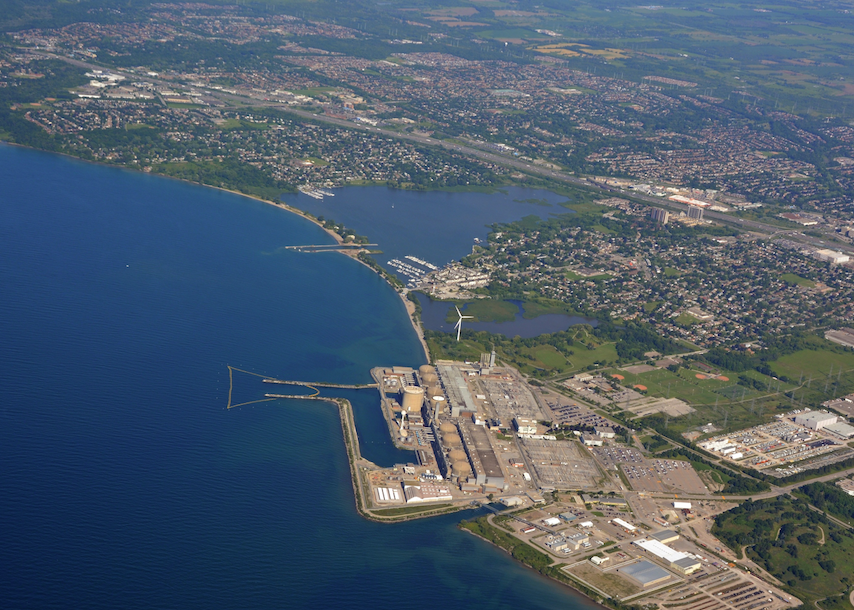Small nuclear reactors can produce clean electricity for mining – CNA CEO

When Canada announced its climate change plan last week, the government estimated the size of the global clean technology market to range between C$2.5 trillion and C$6.4 trillion by 2022-23.
Prime Minister Justin Trudeau’s plan puts a focus on investing in clean technology to address climate change and support economic prosperity, and the proposed plan is supported by an initial C$15 billion in investments.
While some environmentalists cringe at the word ‘nuclear’, nuclear technology can actually generate electricity without carbon output.
Canadian Nuclear Association’s (CNA), Nuclear Now initiative aims to achieve a clean energy future, and John Gorman, CNA president and CEO said that despite the fact that energy demand has been growing, renewables are being backed up by gas and coal when the wind doesn’t blow and the sun doesn’t shine.
“The issue is that 20 years ago, we had 36% non-emitting electricity on the world’s electricity grids and despite the very aggressive role out of renewables, [and] the investments that we’ve made, 20 years later, we’re still at 36%,” Gorman, who in 2008 was named climate project ambassador by Nobel Laureate Al Gore, told MINING.COM.
Gorman said the climate plan sends a signal that nuclear technology is an integral part of a zero-emission future and notes that nuclear has been part of the solution – along with hydro, wind and solar – in building a clean electricity profile.
“ESG is increasingly becoming an investment metric. It’s a real convergence of pressures that the mining sector is experiencing. It’s not only the carbon pricing regime that we have in [Canada], but the aggressive, ambitious decarbonization goals”
John Gorman, CEO, Canadian Nuclear Association
“When I talk to people who believe that wind and solar are that what is needed to combat climate change and decarbonize our electricity systems, I point to the enormity of the challenge that we have in front of us – we haven’t made any progress in 20 years, despite wind and solar being cost competitive now – we need more aggressive solutions.”
Gorman said nuclear energy small module reactors (SMRs) are part of the panacea of solutions that include solar and wind. The reactors, he said, can load follow when the wind stops blowing and the sun stops shining to fill in the gap – and that the heat they produce can be used in hydrogen in mining operations.
“Nuclear energy, and especially the small modular reactors can be the replacement for coal and gas-fired electricity generation supporting renewables, but also providing clean, high-temperature heat for extraction industries, providing hydrogen,” Gorman said.
Canada’s mining industry has been working to find solutions to get off the diesel dependency reliance, especially at mining operations that are off-grid in northern communities dependent on heat generation and transportation fleets.
The investment community is increasingly looking at the level of carbon intensity that products inherently have, and in the Canadian mining context, many of these are northern and mining operations that are off grid and at a severe disadvantage on both of those fronts because of the diesel dependency that they have.
“Decarbonizing those mobile fleets is going to require heavy-duty electrification, or hydrogen. With off gid mines, SMRs are scalable, portable nuclear reactors produce constant clean electricity and clean high temperature heat [that] can be used for almost all needs mining operations have,” Gorman said.
CMIC has done studies on costs and Gorman said they found that with the first of the kind of small modular reactors being produced in Canada, energy costs will go down by 50%.
“ESG is increasingly becoming an investment metric. It’s a real convergence of pressures that the mining sector is experiencing. It’s not only the Canadian context. It’s not only the carbon pricing regime that we have in place here, the aggressive, ambitious decarbonization goals that we have adopted and have us on this progressive pathway to all sectors reducing their emissions to net-zero by 2050.”
“Of all of the sectors we come across, the most engaged in looking at applications for SMRs is the mining industry in Canada.”
More News
{{ commodity.name }}
{{ post.title }}
{{ post.date }}

Comments